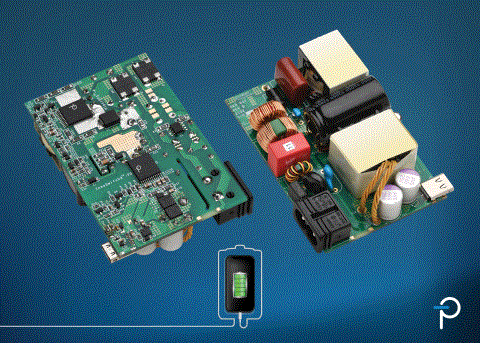Manufacturers
- Abracon
- Adam Tech
- Aerospace, Defense & Marine
- Agastat
- AIC
- AKM Semiconductor
- Alcoswitch
- Allegro
- Alps Electric
- Altera
- AMI Semiconductor
- AMP
- ams
- Analog Devices (ADI)
- Aptina Imaging
- Atmel
- Avago / Broadcom
- AVX
- Axicom
- Bccomponents
- Beyschlag
- BI Technologies
- Bourns Inc.
- Bowei Integrated Circuits
- Bridgelux
- Buchanan
- California Micro Devices
- Catalyst Semiconductor
- CGS
- Cirrus Logic
- Citizen Electronics
- CML Microcircuits
- Coiltronics
- Cooper Bussmann
- Corcom
- Core Logic
- Cree
- CSR PLC
- CTS
- Cypress Semiconductor
- Dale
- Data Image
- Deutsch
- Diodes Incorporated
- DOMINANT Opto Technologies
- E-T-A
- Eaton
- ECS
- Edison Opto
- Elcon
- EPCOS
- Epistar
- Epson
- Everlight Electronics
- Exar
- Fairchild Semiconductor
- FCI
- Freescale Semiconductor
- Fremont Micro Devices (FMD)
- Fujitsu Semiconductor
- Fulltech Electric
- General Semiconductor
- Harvatek
- Holsworthy
- Hsuan Mao Technology
- IDT
- Infineon Technologies
- Innolux
- International Rectifier (IR)
- Intersil
- IRC
- ISSI
- IXYS-IC
- Jing Cheng Electronical
- JL World
- Johanson Dielectrics
- Johanson Technology
- JRC / NJR
- JST
- KEC
- Kilovac
- Kingbright
- Kyocera Industrial Ceramics
- LEDiL
- Linear Technology / ADI
- Lite-On Technology
- Littelfuse
- Lumex
- Lumileds
- Luminary Micro
- Luminus Devices
- Macronix
- Maojwei / ZJPT
- Maxim Integrated
- MCC
- Mean Well Enterprises
- Microchip Technology
- Micron
- Microsemi
- Mini-Circuits
- Molex
- Murata Manufacturing
- Murata Power Solutions
- MWT
- National Semiconductor
- Nichicon
- Nippon Chemi-Con
- NJR / JRC
- NVE
- NXP Semiconductors
- OEG
- Omnivision
- ON Semiconductor
- Optek Technology
- Optrex
- OSRAM Opto Semiconductors
- OTAX
- Panasonic
- Peregrine(pSemi)
- Potter & Brumfield
- Power Integrations
- PowerStor
- Preci-Dip
- Prewell
- Products Unlimited
- Pulse Electronics
- PulseCore Semiconductor
- Qorvo
- Raychem
- Renesas Electronics
- RFMD
- Richtek Technology
- ROHM Semiconductor
- Rubycon
- Samsung Electro-Mechanics
- Samsung Semiconductor
- Schaffner
- Schrack
- Seiko Instruments, Inc. (SII)
- Semtech
- Sensata
- Seoul Semiconductor
- Sfernice
- Sharp Display
- Sharp Microelectronics
- Silicon Labs
- Siliconix
- Skyworks Solutions
- SoniCrest / JL World
- Spansion
- Sprague
- Stanley Electric
- STMicroelectronics
- Sunny Electronics
- Susumu (SSM)
- Taimag
- Taiyo Yuden
- TDK
- TDK-Lambda
- TE Connectivity
- Teccor
- Texas Instruments (TI)
- Thin Film
- Tianma Micro-electronics
- TOCOS
- TOKO
- Toshiba Electronic Components
- TT Electronics
- Tusonix
- TXC
- Tyntek
- Vishay
- Vishay Precision Group
- Vitramon
- Walsin Technology
- Weidmuller
- Welwyn
- Wickmann
- Winbond
- Xilinx
- Yageo
- Zetex Semiconductors
- ZJPT / Maojwei
News
Power Integrations Releases InnoSwitch3-PD Reference Design for Ultra-Compact USB Type C, PD + PPS Adapter
2021-11-09 | Return SAN JOSE, Calif.Power Integrations, the leader in high-voltage integrated circuits for energy-efficient power conversion, today published a new reference design that describes a USB Power Delivery (PD) charger with exceptional performance and very low component count. Based around Power Integrations' new InnoSwitch™3-PD PowiGaN™ flyback switcher and HiperPFS™-4 PFC controller ICs, the DER-937 report contains the power supply specification, schematic, PCB layout, bill of materials, detailed magnetics specifications and performance data of a power factor corrected (PFC) 100 W USB PD 3.0 + Programmable Power Supply (PPS) charger using only 117 components.
SAN JOSE, Calif.Power Integrations, the leader in high-voltage integrated circuits for energy-efficient power conversion, today published a new reference design that describes a USB Power Delivery (PD) charger with exceptional performance and very low component count. Based around Power Integrations' new InnoSwitch™3-PD PowiGaN™ flyback switcher and HiperPFS™-4 PFC controller ICs, the DER-937 report contains the power supply specification, schematic, PCB layout, bill of materials, detailed magnetics specifications and performance data of a power factor corrected (PFC) 100 W USB PD 3.0 + Programmable Power Supply (PPS) charger using only 117 components.Aditya Kulkarni, senior product marketing engineer at Power Integrations, said: "This USB PD charger design reaches efficiency levels in excess of 93%, including input, PFC and flyback stages. Its no-load performance is also excellent – the circuit requires less than 40 mW no-load input power at 230 VAC. BOM count is approximately half that of conventional designs, saving space, reducing design time and simplifying component sourcing for high-volume manufacture of slim, ultra-compact OEM and aftermarket chargers."
DER-937 uses two recently introduced ICs from Power Integrations. The InnoSwitch3-PD INN3870C off-line quasi-resonant flyback switcher combines a USB Type C and USB PD controller, high-voltage PowiGaN gallium-nitride switch, synchronous rectification and FluxLink™ feedback. The HiperPFS-4 PFS7628C PFC controller IC, available with an integrated Qspeed™ low-reverse-recovery-charge (Qrr) boost diode, delivers greater than 98% efficiency across the full load range.
Availability & Resources
DER-937 is available to download on the Power Integrations website at power.com/der-937.
Source: http://www.powerint.com/





